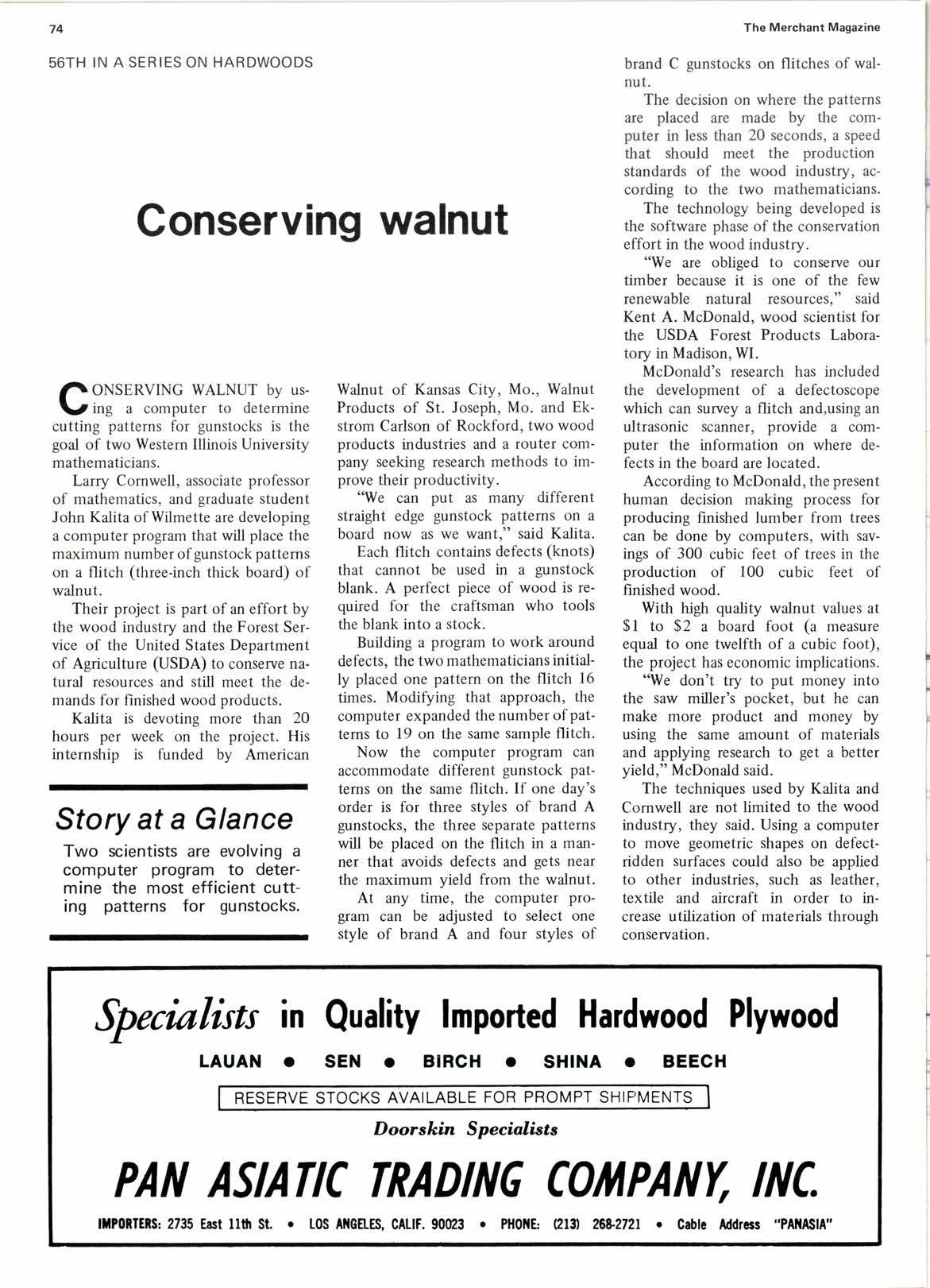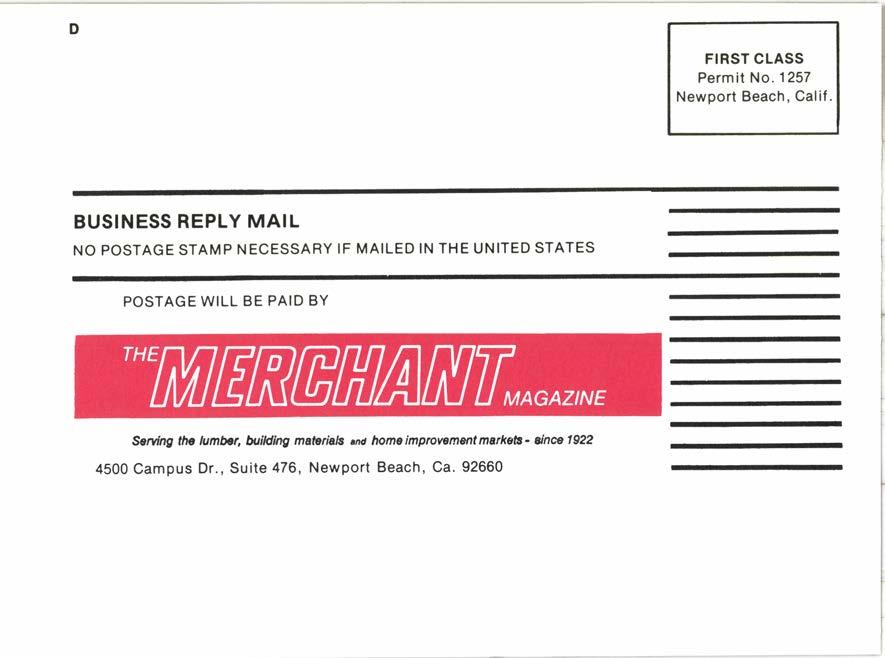
3 minute read
Conserving walnut
ONSERVING WALNUT by using a computer to determine cutting patterns for gunstocks is the goal of two Western Illinois University mathematicians.
Larry Cornwell, associate professor of mathematics, and graduate student John Kalita of Wilmette are developing a computer program that will place the maximum number of gunstock pattems on a flitch (three-inch thick board) of walnut.
Their project is part of an effort by the wood industry and the Forest Service of the United States Department of Agriculture (USDA) to conserye natural resources and still meet the demands for finished wood products.
Kalita is devoting more than 20 hours per week on the project. His internship is funded bv American
Story at a Glance
Two scientists are evolving a computer program to determine the most efficient cutting patterns for gunstocks.
Walnut of Kansas City, Mo., Walnut Products of St. Joseph, Mo. and Ekstrom Carlson of Rockford, two wood products industries and a router company seeking research methods to improve their productivity.
"We can put as many different straight edge gunstock pattems on a board now as we want." said Kalita.
Each flitch contains defects (knots) that cannot be used in a gunstock blank. A perfect piece of wood is required for the craftsman who tools the blank into a stock.
Building a program to work around defects, the two mathematicians initially placed one pattern on the flitch 16 times. Modifying that approach, the computer expanded the number of pattems to 19 on the same sample flitch.
Now the computer program can accommodate different gunstock pattems on the same flitch. If one day's order is for three styles of brand A gunstocks, the three separate patterns will be placed on the flitch in a manner that avoids defects and gets near the maximum yield from the walnut.
At any time, the computer program can be adjusted to select one stvle of brand A and four stvles of brand C gunstocks on flitches of walnut.
The decision on where the patterns are placed are made by the computer in less than 20 seconds, a speed that should meet the production standards of the wood industty, aecording to the two mathematicians.
The technology being developed is the software phase of the conservation effort in the wood industry.
"We are obliged to conserye our timber because it is one of the few renewable nafural resources," said Kent A. McDonald, wood scientist for the USDA Forest Products Laboratory in Madison, WI.
McDonald's research has included the development of a defectoscope which can survey a flitch and,using an ultrasonic scanner, provide a computer the information on where defects in the board are located.
According to McDonald, the present human decision making process for producing finished lumber from trees can be done by computers, with savings of 300 cubic feet of trees in the production of 100 cubic feet of finished wood.
With high quality walnut values at $l to $2 a board foot (a measure equal to one twelfth of a cubic foot), the project has economic implications.
"We don't try to put money into the saw miller's pocket, but he can make more product and money by using the same amount of materials and applying research to get a better yield," McDonald said.
The techniques used by Kalita and Cornwell are not limited to the wood industry, they said. Using a computer to move geometric shapes on defectridden surfaces could also be applied to other industries. such as leather. textile and aircraft in order to increase utilization of materials through conservation.
Sering lhe lumber, buildlng mrterlals rnd homo lmprovoment mrrtets in lho 13 Weslern slatos-slnca 1922
Company (if any
Bill me ! Bill company ! Payment enclosed
FOR: fl 1 year-$S tr 2 years-$8 n 3 years-$1 1


Indoors or out, redwood clear grades offer a design versatility that no other wood can boast. Contrasting grains, ranging from the bold zebra stripes of heartwood to the more subtle tones of creamy sapwood with almost no contrast, contribute a design element suitable for interior or exterior architectural specifi cation.
The Marshburn residence in Whittier. Ca.. is a showcase of redwood clears. Ceiling applications in many of the rooms are especially effective, cementing the warmth of redwood with the inherent beauty of the clear grades. An added advantage was the economy offered. Redwood clears are the most economical wav to purchase










